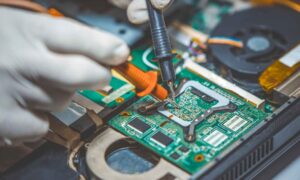Your device collects data the way your home collects dust. Throughout your living spaces, dust collects in the corners, under the furniture and over the surfaces you aren’t using very often. Unless you are diligent about cleaning every square inch on a regular basis, you will probably leave some of your dust behind when you eventually move out.
However, you don’t want to leave any data in your devices when you are done with them. Data can include sensitive information like your name, address and financial accounts; if someone nefarious gets their hands on your old device, they could steal your identity, or worse.
Before you get rid of any digital device, you need to perform a thorough cleanse. Here’s what you can do to prevent passing on a data-laden device.
Back up the Device
Undoubtedly, you have already transferred your most important data from your old computer to whatever device you currently use, but if you haven’t performed a full backup since before you stopped using your old machine, you should. You might not remember a folder of your firstborn’s baby photos or a document of poems you wrote in high school until you have already lost them, so it is best to complete a backup now, before you take any steps toward destroying your data and getting rid of your device. You can back up your old computer to your new computer, or you can use an external hard drive or the cloud if you know you don’t need any of your old files. You might consider using a free PC cleaner, so you can avoid transferring any true junk.
While you are completing this process, you might quickly review the applications you have installed on your old machine. If any of them restrict your licensing rights to one device, you might want to uninstall them before you add anything to your new computer. You might also consider systematically signing out of any applications or accounts stored on your old device. Then, you can be certain that no one will be able to use your data before you take the next steps in getting rid of the computer.
Erase the Hard Drive
It is tempting to select all the files on your computer and select “delete,” but unfortunately, all that data remains on your device even after you empty the recycling bin. A much better solution is to use an application that permanently erases and overwrites your hard drive, making all your old information irretrievable even by the most experienced and dedicated hackers. Experts advocate for overwriting your drive multiple times with layers of all zeros to be certain that no bits of your old data remain.
Fortunately, PCs that run Windows have a built-in tool for secure overwriting. You can wipe any drive by right-clicking the drive and selecting “Format.” You should uncheck “Quick Format” to make certain that the process involves writing zeros to the entire disk. This process can be lengthy, so you might have your new device handy to keep you occupied while your old machine
Smash the Hard Drive
You might be able to sell your old computer if it is still in good working order. You can also donate old machines to schools, libraries and a variety of non-profit organizations. However, before you do, you should remove the hard drive. Even if you have taken the care to overwrite your drives, you definitely don’t want sensitive information about you falling into the wrong hands. You can replace the old hard drive with a new one — drives aren’t terribly expensive — or you can let your recipients know that they will need to install a hard drive before the computer is usable.
If you don’t need an extra hard drive in your new computer, you should smash the hard drive before you toss it in the recycling bin or trash can. A broken hard drive can’t be plugged into a device, so if you take a hammer to your old drive, you can be 100-percent sure that no nefarious character will be able to see your old data.
You need a device that feels good to use, so eventually, even the best computers get retired. You can be sure to stay safe and secure by disposing of your old device with these three steps.



































